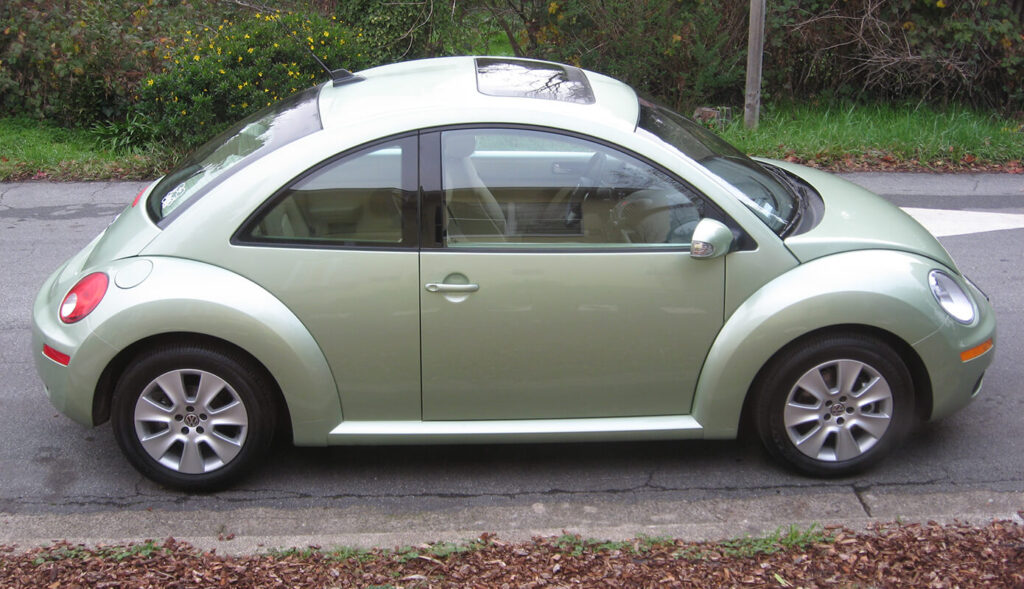
Slug Bug,The open road has always been a canvas for adventure, conversation, and, of course, a few good-natured games. Among these road trip staples is the iconic “Slug Bug” game. For many, “Slug Bug” isn’t just a game; it’s a cultural touchstone that brings back fond memories of simpler times. Whether you’re a child of the 80s, 90s, or even the 2000s, chances are you’ve engaged in this lighthearted competition. But where did this beloved pastime originate? And why has it persisted for generations?
Slug Bug, also known as “Punch Buggy” in some regions, is a game centered around spotting Volkswagen Beetles on the road. While the concept may seem straightforward, its enduring charm lies in its simplicity and the bonds it forges between passengers. In this article, we’ll take an in-depth look at the history, rules, variations, and cultural impact of the “Slug Bug” game, as well as explore its place in today’s world.
The Origins of Slug Bug: Where It All Began
The roots of the Slug Bug game are intertwined with the history of the Volkswagen Beetle itself. The Volkswagen Beetle, or “Bug,” was first manufactured in the 1930s in Germany. Designed by Ferdinand Porsche and commissioned by Adolf Hitler as the “people’s car” (“Volkswagen” in German), the Beetle was initially intended to be an affordable vehicle for the masses.
Fast forward to the post-World War II era, the Beetle gained popularity across the globe, especially in the United States during the 1960s. Known for its quirky design and affordability, the Beetle became an iconic symbol of the counterculture movement. But how did this car—designed for practicality—become the centerpiece of a road trip game?
The exact origins of the Slug Bug game are somewhat murky, with no definitive inventor or starting point. Many believe it emerged organically in the 1960s or 70s when Beetles were more prevalent on American roads. Children in the backseat of family cars likely began spotting Beetles for fun, and the act of playfully punching their siblings added a physical, competitive edge to the game. What started as an innocent way to pass time on long drives soon evolved into a widespread phenomenon.
How to Play Slug Bug: Rules and Variations
The Basics
The premise of the Slug Bug game is deceptively simple: when you spot a Volkswagen Beetle, you call out “Slug Bug!” and lightly punch the person next to you. Traditionally, the punch is delivered to the upper arm, and the game relies on the honor system to ensure fairness. There are no official scoreboards or referees, making it a game of trust and quick reflexes.
Variations of the Game
Over time, numerous variations of the Slug Bug game have emerged, each adding its unique twist to the original concept:
- Color-Specific Points: Some players assign extra points for spotting Beetles of rare colors. For example, a yellow Beetle might be worth two points, while a standard black Beetle is worth one.
- No-Punch Rule: For those who prefer a less physical version, the “no-punch” variation replaces punches with gentle taps or simply shouting out the Beetle’s color.
- Expanded Vehicle Categories: In modern times, players sometimes include other Volkswagen models, such as the Beetle Convertible or the New Beetle, as eligible vehicles.
- Penalties for False Calls: Calling “Slug Bug” on a non-Beetle vehicle can lead to penalties, such as losing points or being temporarily excluded from the game.
- Team Play: Families or groups can divide into teams, with each team working together to spot as many Beetles as possible.
These variations ensure that the game remains fresh and adaptable to different groups and settings.
The Psychology Behind Slug Bug: Why It’s So Engaging
Nostalgia and Simplicity
One of the key reasons for the enduring popularity of Slug Bug is its nostalgic appeal. For many, the game harks back to childhood memories of family vacations, road trips, and carefree days. Its simplicity means that anyone, regardless of age or background, can join in the fun.
The Competitive Edge
Slug Bug taps into our natural competitive instincts. The thrill of being the first to spot a Beetle and the friendly rivalry it sparks keep players engaged. It’s a harmless way to channel competitiveness, making it especially appealing for siblings and friends.
Connection and Interaction
In an era where digital distractions often dominate car rides, Slug Bug encourages face-to-face interaction. It’s a rare game that fosters connection without the need for screens or devices, making it a valuable tool for bonding.
The Volkswagen Beetle: The Star of the Show
A Design Icon
The Volkswagen Beetle’s distinctive design is a big part of what makes it so easy to spot. Its rounded, compact shape and unique silhouette set it apart from other vehicles on the road. Over the years, the Beetle has undergone various design updates, but its core aesthetic has remained remarkably consistent.
Cultural Significance
Beyond its role in the Slug Bug game, the Beetle holds a special place in popular culture. From its appearance in movies like “Herbie the Love Bug” to its association with the 1960s counterculture movement, the Beetle is more than just a car—it’s a symbol of individuality and creativity.
Decline and Resurgence
The Beetle’s production officially ended in 2019, marking the end of an era. However, its legacy lives on through classic car enthusiasts, collectors, and, of course, the Slug Bug game. The Beetle’s rarity on modern roads has only added to the excitement of spotting one.
Slug Bug in the Digital Age: Adapting to Modern Times
Road Trip Games in the 21st Century
In a world dominated by smartphones and tablets, traditional road trip games like Slug Bug face stiff competition. However, many families are rediscovering the joy of unplugged entertainment during travel. Slug Bug remains a favorite due to its simplicity and lack of required materials.
Social Media and Memes
The game has found new life online through social media platforms and memes. Enthusiasts share their Slug Bug experiences, funny anecdotes, and even create hashtags to celebrate the game. This digital presence has introduced the game to a new generation of players.
Mobile Apps
For those who crave a digital twist, several mobile apps simulate the Slug Bug experience. These apps use augmented reality and GPS to detect Beetles in your vicinity, making the game more accessible for urban players.
Why Slug Bug Will Never Go Out of Style
Slug Bug’s enduring appeal lies in its ability to adapt and remain relevant across generations. Its blend of nostalgia, simplicity, and spontaneity ensures that it will continue to be a cherished part of road trips for years to come. As long as there are Beetles on the road—and playful spirits in the backseat—the game will live on.
Conclusion: Celebrating a Timeless Tradition
The “Slug Bug” game is more than just a way to pass the time during long car rides; it’s a testament to the power of shared experiences and simple pleasures. In an age of constant connectivity, this charming game reminds us of the joy found in the journey, not just the destination.
So, the next time you hit the road, keep your eyes peeled for those iconic Beetles. Whether you’re reliving childhood memories or introducing the game to a new generation, Slug Bug is sure to bring smiles, laughter, and maybe a few gentle punches along the way. Happy spotting!



